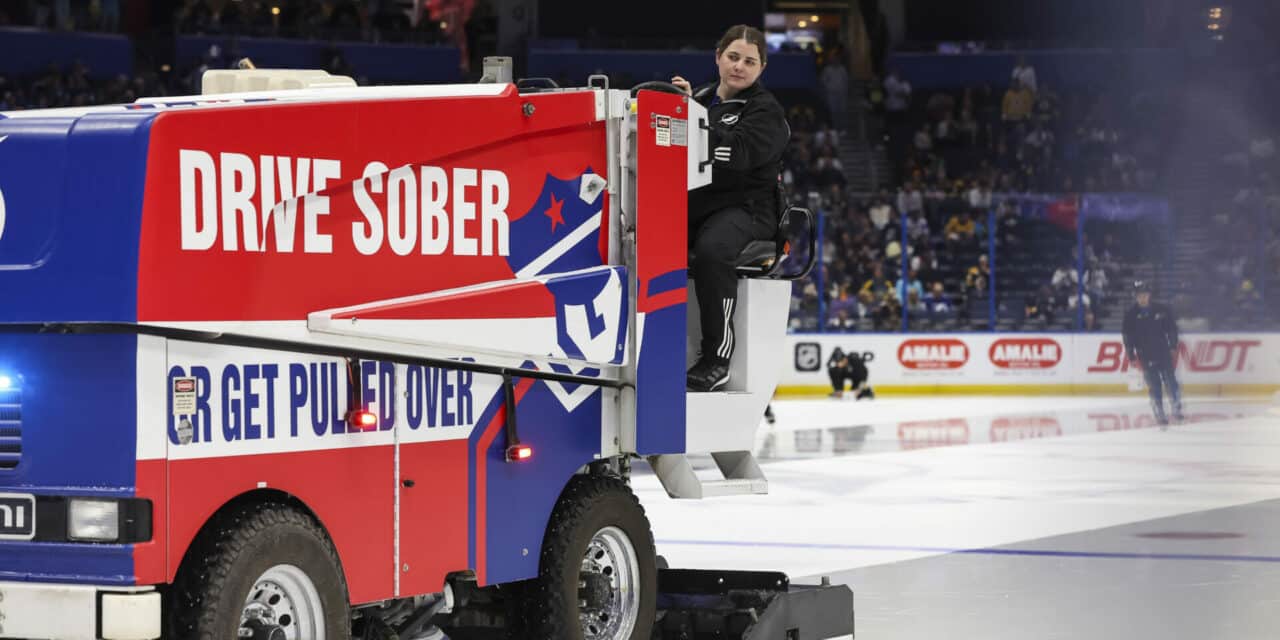HELP WANTED: A shortage of drivers has Zamboni planning for a potential autonomous model in the future. (Getty Images)
FROM THE RAFTERS
VenuesNow senior editor Don Muret’s column runs in the July 2024 issue.
As VenuesNow recognizes Zamboni Company’s 75 years of existence in our July issue, industry officials say there’s a shortage of experienced operators to run ice resurfacing machines as veterans steer toward retirement.
The folks at Zamboni Company are turning to technology to help resolve the issue.
Mike Zamboni, engineering product development manager for the company and the fourth generation of his family working for the firm, mentioned the big gap left by retiring operators. In turn, it’s driven advances in automation to streamline the process and help make it easier to train a new generation.
As the level of automation increases for Zamboni machines, the question becomes whether a time will come when the company introduces a self-driving ice resurfacer. It’s a concept Mike Zamboni must consider as part of his job, given the fallout over the potential loss in the job market for the operators.
“Down the road, there’s an opportunity for a self-driving machine to give venues the ability to manage their ice more effectively and have their staff focus on other things in the facility,” he said. “It’s not as simple as putting it out on the ice to help reduce your workforce. There’s a lot more that goes into making sure it’s safe; it’s a holistic solution. The goal is not to take anybody’s job away, but to provide them with a better tool for managing the ice.”
There’s already been some testing done on self-driving Zamboni machines.
Three years ago, a group of Carnegie Mellon University graduate students, dubbed as “AI on Ice,” started working on an autonomous model. The project was done in tandem with the NHL’s Pittsburgh Penguins, Zamboni Company, the Duquesne Light Company and Locomation, a spinoff of the school’s robotics institute, which is using similar technology to help the trucking industry faced with a shortage of drivers, according to TribLive.com.
For hockey rinks, the prototype was tied to a two-Zamboni convoy system with a human operating the lead machine, followed by the autonomous machine “tethered” electronically to the one run by a person.
The tests, conducted in December 2022 at UPMC Lemieux Sports Complex, the Penguins’ practice facility, worked for the most part and had a few safeguards in place. There was a driver aboard the autonomous Zamboni and an emergency switch on the machine that converts from self-driving to manual operation if necessary.
To date, the testing has not advanced to the next stage for a self-driving Zamboni machine at an NHL arena, according to Brandon Radeke, Zamboni USA’s regional sales and product manager.
Radeke was involved in the testing during his 10-year stint as the Penguins’ director of ice operations. While he applauds the technology and said he had fun helping the students, Radeke firmly believes that it takes a true operator to make great ice by seeing and knowing the conditions in front of them.
A computer can’t make those adjustments on the fly, he said.
“Everyone thinks it’s cool, but in our world, the concern is about taking somebody’s job,” Radeke said. “Plus, there are too many factors that can go wrong. Anything could happen, a kid jumping on the ice by accident (for example). But then, I also didn’t think I’d see a self-driving car either.”
Jim Bilotta, who’s operated a Zamboni for the Philadelphia Flyers since 1980, agreed with Radeke. The issue is adjusting to the varying ice conditions during a hockey game, pinpointing the extra ruts that require additional resources to patch those holes in the ice.
These days, NHL players are heavier and carry sharper stick blades, causing greater wear and tear on the ice, and the issue is whether a camera sensor could pick up those deep gashes with an autonomous machine, Bilotta said.
“Until it gets that far, it’s up to the human to see it and make a judgment on whether it needs to be patched or get extra water or a deeper cut,” he said.
Some NHL team executives support the technology, given the human element involved in creating a smooth ice surface.
“I don’t see why you can’t get to that level, but making ice is as much of an art as it is a science,” said Kelly Cheeseman, chief operating officer for the NHL’s Los Angeles Kings and AEG Sports. “There’s a lot of nuances for what they’re doing out there.”
Still, the concept is intriguing as the industry grapples with resolving the shortage of Zamboni drivers. This year, the company itself has expanded its “boot camps” from Canada to the U.S. to help train operators with the newest technology.
Paula Coony, Zamboni Company’s brand manager, said the feedback from the customers’ point of view is that the self-driving concept is not a priority for them at this point, despite the shortage of operators.
“I don’t know if it’s necessarily a right now thing, and I’m certainly not saying it isn’t a future thing,” Coony said. “Because there is so much human observation that feeds into the things that we’re doing with resurfacing, we’re focused on making the best non-autonomous product.”







